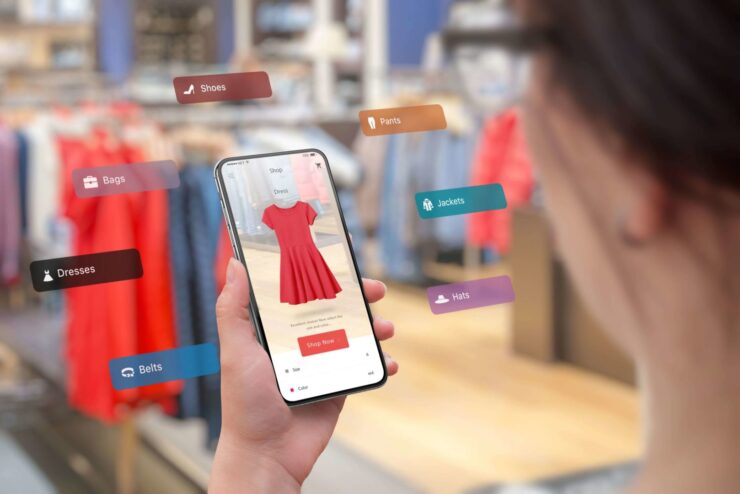The digital marketplace is evolving at an unprecedented pace, fundamentally transforming the way businesses interact with their customers. In this vibrant landscape, the post-purchase customer experience has emerged as a critical battleground for e-commerce brands aiming to build loyalty and encourage repeat business.
This blog post delves into the future of e-commerce, with a keen focus on the trends shaping the post-purchase customer experience. Through meticulous research and analysis, we present a comprehensive look at what businesses and consumers alike can expect in the coming years.
Whether you’re a startup owner, a seasoned marketer, or simply an e-commerce enthusiast, this post promises to equip you with valuable insights, making complex concepts accessible to all.
Enhanced Personalization and Predictive Analytics
The future of e-commerce lies in leveraging advanced analytics and machine learning to offer highly personalized post-purchase experiences. Brands are increasingly utilizing data to predict future purchases and tailor communications accordingly. This approach not only enhances satisfaction but also significantly increases the likelihood of repeat business.
Predictive analytics are set to revolutionize the post-purchase experience by enabling companies to anticipate needs and address issues before they arise. This could mean predicting when a client might need a product refill or identifying potential dissatisfaction based on their interaction with the service.
Omnichannel Support and Seamless Integration

As customers engage with brands across multiple platforms, providing consistent and seamless support across all channels becomes crucial. The future of post-purchase experience will see a significant shift towards omnichannel communication, where they can switch between platforms without any loss in the quality or context of the service.
In this evolving landscape, businesses are looking for effective tools and solutions that can help them manage these complex interactions effortlessly. This search for robust platforms leads many to explore Narvar alternatives, which offer diverse options to enhance and streamline the post-purchase journey.
Companies like WismoLabs present themselves as compelling alternatives, providing innovative features and integrations tailored to modern e-commerce needs.
In addition to omnichannel communication, seamless integration across devices and platforms is paramount. They expect to move flawlessly between devices, from mobile to desktop to tablet, without any disruption in their shopping or support experience.
This seamless integration extends to the post-purchase experience as well. Whether it’s tracking a package, making a return, or accessing customer support, consumers expect these processes to be as smooth and hassle-free as possible, irrespective of the device or platform they’re using.
Sustainability and Ethical Practices
In the face of growing environmental concerns, sustainability has become a significant factor in consumer purchasing decisions. Post-purchase, customers are increasingly interested in the ecological impact of their purchases, from packaging materials to the carbon footprint of shipping methods.
Beyond environmental sustainability, ethical practices and transparency in business operations are becoming critical components of the post-purchase customer experience. Consumers are more informed and concerned about the ethics behind their purchases, including labor practices, sourcing, and the overall impact of their consumption.
To address these concerns, e-commerce businesses are striving for greater transparency, providing detailed information about their supply chain, manufacturing processes, and the ethical standards they adhere to. This level of openness fosters trust and strengthens relationships, encouraging a more engaged and loyal base.
Innovations in Logistics and Delivery

The rapid advancement in logistics technology is setting the stage for significantly reduced delivery times, directly impacting the post-purchase experience. Innovations such as drone deliveries and autonomous vehicles promise to expedite shipping, making same-day or even-hour deliveries a tangible reality for many consumers.
This leap in logistics efficiency not only meets the growing demand for instant gratification but also raises the bar for what consumers expect in terms of delivery speed and convenience.
As delivery methods evolve, so too does the technology for tracking and communication. Future e-commerce platforms will offer more detailed and accurate tracking information, giving customers unprecedented visibility into the journey of their purchases from warehouse to doorstep.
Coupled with real-time communication updates, consumers can stay informed at every step of the delivery process. This transparency not only improves the overall post-purchase experience but also minimizes the anxiety and uncertainty that can sometimes accompany online orders.
Artificial Intelligence in Customer Service
Artificial Intelligence (AI) is redefining customer service in the e-commerce sector. AI-driven chatbots and virtual assistants are becoming increasingly sophisticated, capable of handling a wide range of post-purchase inquiries, from returns and exchanges to feedback collection and support.
These intelligent systems provide instant support 24/7, reducing wait times and improving accessibility for customers worldwide. As AI technology continues to advance, these systems will become even more capable, offering personalized advice and solutions that rival human customer service representatives.
Beyond customer support, AI is being leveraged to provide personalized shopping recommendations and insights based on post-purchase behavior. By analyzing past purchases, returns, and customer feedback, AI systems can curate personalized shopping experiences, suggest complementary products, and even predict future shopping needs.
This not only enhances the customer experience but also boosts sales and customer retention by making each shopping journey feel tailored to the individual’s preferences and needs.
The Role of Augmented Reality in Post-Purchase Satisfaction

Augmented Reality (AR) is transforming the post-purchase experience by allowing customers to interact with products in a virtual space. This technology enables consumers to visualize products in their own homes before making a purchase, significantly reducing the likelihood of returns and dissatisfaction.
Post-purchase, AR can enhance user manuals and guides, providing a more interactive and engaging way for customers to learn about and get the most out of their purchases.
By integrating AR into the post-purchase experience, brands can create unique and engaging experiences that elevate customer satisfaction and foster loyalty. Whether it’s through virtual try-ons, interactive setup guides, or immersive product demonstrations, AR provides a platform for innovative engagement strategies that resonate with the modern consumer.
This not only improves the immediate post-purchase experience but also builds a deeper connection between the brand and its customers.
Conclusion
The future of e-commerce is intrinsically linked to the evolution of post-purchase customer experience. By embracing personalization, predictive analytics, omnichannel support, and sustainable, ethical practices, businesses can not only meet but exceed customer expectations.
These trends highlight the shift towards a more customer-centric approach, where the focus is on building lasting relationships rather than mere transactions. As we look ahead, it’s clear that the brands that prioritize and innovate in these areas will be the ones leading the charge in the digital marketplace.

